CG Trader
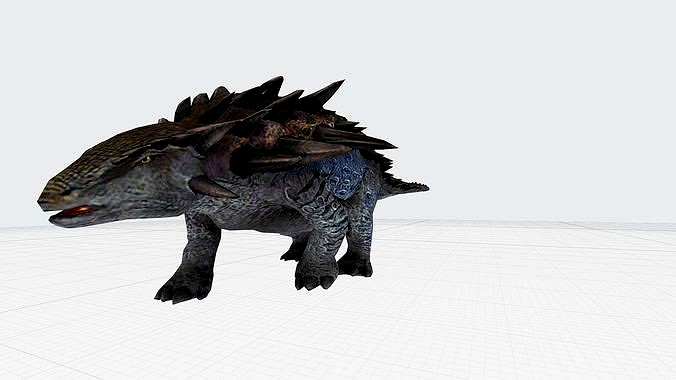
Nodosaurus with Animation
by CG Trader
Last crawled date: 1 year, 10 months ago
This nodosaurid ankylosaur was about 4 to 6 metres (13 to 20 ft) long. It was an ornithischian dinosaur with bony dermal plates covering the top of its body, and it may have had spikes along its side as well. The dermal plates were arranged in bands along its body, with narrow bands over the ribs alternating with wider plates in between. These wider plates were covered in regularly arranged bony nodules, which give the animal its scientific name.[1] In 2010 Paul estimated its length at 6 meters (20 ft) and its weight at 3.5 tonnes (3.85 short tons).[2] It had four short legs, five-toed feet, a short neck, and a long, stiff, clubless tail. The head was narrow, with a pointed snout, powerful jaws, and small teeth.[1] It perhaps ate soft plants, as it would have been unable to chew tough, fibrous ones; or alternatively it may have processed the latter with gastroliths and its enormous intestinal apparatus. During the Bone Wars between paleontologists Othniel Charles Marsh and Edward Drinker Cope, Marsh sent his collector William Harlow Reed to the Cenomanian strata of the Frontier Formation of Albany County, Wyoming to collect fossil mammals and reptiles.[3] Reed collected a partial postcranial skeleton (YPM VP 1815) on July 17, 1881 southeast of the productive Quarry 13, the skeleton including: 3 dorsal and 13 caudal vertebrae, 3 dorsal ribs, fragmentary forelimbs, a partial pelvis, femora, tibiae, partial left pes, and several osteoderms.[4][5] One of the first armored dinosaurs to be discovered in North America, Nodosaurus textilis was named by Othniel Charles Marsh in 1889, the generic name meaning knobbed lizard and the specific name meaning woven.[6][7] Marsh assigned to genus to Stegosauria, but later assigned it to its own family, Nodosauridae, in 1890 based on the heavy dermal armor, solid bones, large forelimbs, and ungulate feet.[8] The type specimen remains the only definite specimen of Nodosaurus, though Stegopelta has been considered a synonym in the past,[5] it is most likely a distinct Struthiosaurinine.[4][9] Richard Swan Lull did a more comprehensive description of Nodosaurus in 1921, who assigned the taxa Stegopelta, Hoplitosaurus, Hierosaurus, Ankylosaurus, and placed the British Polacanthus as a relative of the family. reptile dinosaur paleontology lizard wildlife animal creature extinct iguana tyrant acrocanthosaurus animals claw tyrannosauru rex amargasaurus immense wild danger nature
Similar models
cg_trader
$15

Apatosaurus with Animation
...life animal creature extinct iguana tyrant acrocanthosaurus animals claw tyrannosauru rex amargasaurus immense wild danger nature
cg_trader
$15

Baryonyx with Animation
...rd wildlife animal creature extinct iguana tyrant acrocanthosaurus animals claw tyrannosauru rex amargasaurus immense wild danger
cg_trader
free

Chasper lizard
...chasper lizard
cg trader
it is a lizard but not actual reptile dinosaur lizard monster animal wildlife animals
cg_trader
$99

Crocodile Anatomical Skeleton
...eptile reptiles dragon africa lizard monster predatory animals dinosaur skeleton dinosaur skeleton high quality realistic animals
cg_trader
$4

Tyrannosaurus Rex or T-Rex Dinosaur Skeleton
... skull t rex fantasy and fictional creature animals dinosaur skeleton animal skull dinosaur bone dinosaur skeleton dinosaur skull
cg_trader
free

Velociraptor
...istoric dino raptor lizard lizards reptile jurassic animals beast animal predator monster game games mount mounts raptor dinosaur
3d_export
$65

Dragon Skeleton 3D Model
...one reptile wild forest dragon african lizard monster predatory 3d pterosaur wings
dragon skeleton 3d model soardd 70150 3dexport
cg_trader
$15

Ankylosaurus with Animation
...life animal creature extinct iguana tyrant acrocanthosaurus animals claw tyrannosauru rex amargasaurus immense wild danger nature
cg_trader
$59

Turtle Skeleton with Cutaway Shell
...os reptile chelonia dinosaur animals dinosaur skeleton dinosaur bone dinosaur bones dinosaur skeleton dinosaur skull dragon skull
cg_trader
$25

Nodosaurus
...nodosaurus
cg trader
nodosaurus nodosaurus dinosaur model 3d vr meta metaverse ar mr mixed reality virtual augmented animals
Nodosaurus
unity_asset_store
$5

Nodosaurus Jurassic Dinosaur
...m vipera games and speed up your game development process. find this & other characters options on the unity asset store.
cg_trader
$25

Nodosaurus
...nodosaurus
cg trader
nodosaurus nodosaurus dinosaur model 3d vr meta metaverse ar mr mixed reality virtual augmented animals
cg_trader
$70

Nodosaurus game asset
...nodosaurus game asset
cg trader
-the nodosaurus was made using maya, blender, zbrush and photoshop.
cg_trader
$40

Acantholipan Gonzalezi Dinosaur - Nodosaurus family
...zard fantasy and fictional creature nature beast collectable mexican extinct animals character game game character jurassic world
cg_trader
$9
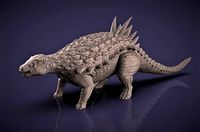
Acantholipan Gonzalezi Dinosaur figurine | 3D
...million years ago. acantholipan gonzalezi, which belongs to the nodosaurus family, is the oldest dinosaur to have been found...
Animation
turbosquid
$120

animals pack1 -animated animals
... available on turbo squid, the world's leading provider of digital 3d models for visualization, films, television, and games.
3ddd
$1
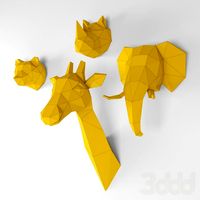
animals
... слон , носорог , медведь
animals
design_connected
$13
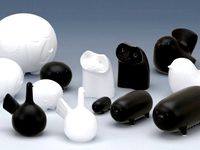
Animals
...animals
designconnected
hakusan animals computer generated 3d model. designed by mori, masahiro.
turbosquid
$10

Box Animated + Animation Video
...3d model box animated + animation video for download as blend on turbosquid: 3d models for games, architecture, videos. (1255250)
turbosquid
$90
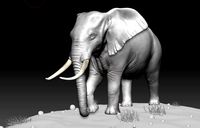
animals
...turbosquid
royalty free 3d model animals for download as obj on turbosquid: 3d models for games, architecture, videos. (1377605)
turbosquid
$10

anime
...e
turbosquid
royalty free 3d model anime for download as obj on turbosquid: 3d models for games, architecture, videos. (1411892)
3ddd
$1

animated flag
...animated flag 3ddd flag flags animation animated cloth , флаг animated flag model .. about...
turbosquid
$48
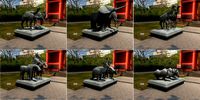
animals
... available on turbo squid, the world's leading provider of digital 3d models for visualization, films, television, and games.
turbosquid
$10
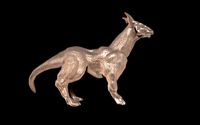
ANIMAL
... available on turbo squid, the world's leading provider of digital 3d models for visualization, films, television, and games.
turbosquid
$8

animal
... available on turbo squid, the world's leading provider of digital 3d models for visualization, films, television, and games.
